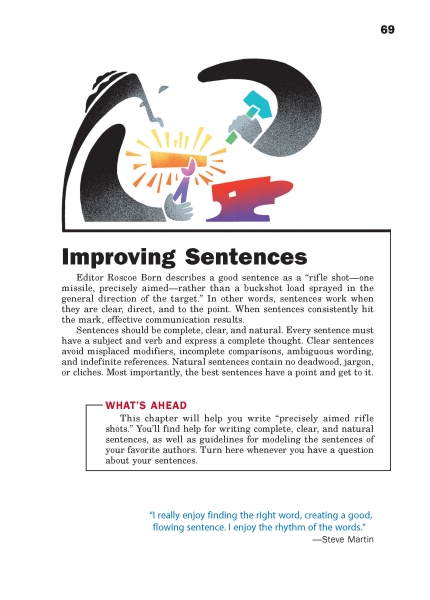Page 069 from

Start-Up Activity
Display images of different types of train cars: lumber, tanker, boxcar, passenger, and so on. For each, ask students what the train carries. Ask what would happen if someone tried to carry logs on a passenger train, or tried to carry passengers on a log train (obviously, disaster).
Point out that sentences carry ideas in writing. The sentences need to be well-suited to the type of ideas they carry. Complex sentences work best for complex ideas, and simple sentences best express simple ideas. And all sentences need to be well built, without shifts in structure, nonparallel elements, and other problems that derail communication.
This chapter will help students watch for and fix the most common problems with sentences but also write sentences that efficiently carry their ideas to readers.
Think About It
“In complex trains of thought, signs are indispensable.”
—George Henry Lewes

Start-Up Activity
Display images of different types of train cars: lumber, tanker, boxcar, passenger, and so on. For each, ask students what the train carries. Ask what would happen if someone tried to carry logs on a passenger train, or tried to carry passengers on a log train (obviously, disaster).
Point out that sentences carry ideas in writing. The sentences need to be well-suited to the type of ideas they carry. Complex sentences work best for complex ideas, and simple sentences best express simple ideas. And all sentences need to be well built, without shifts in structure, nonparallel elements, and other problems that derail communication.
This chapter will help students watch for and fix the most common problems with sentences but also write sentences that efficiently carry their ideas to readers.
Think About It
“In complex trains of thought, signs are indispensable.”
—George Henry Lewes




